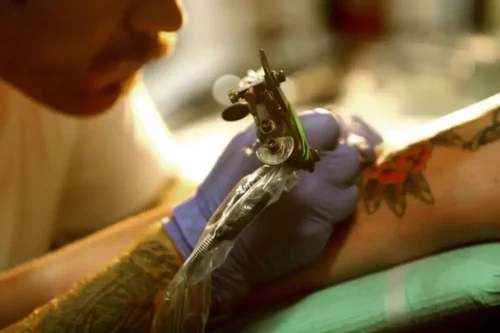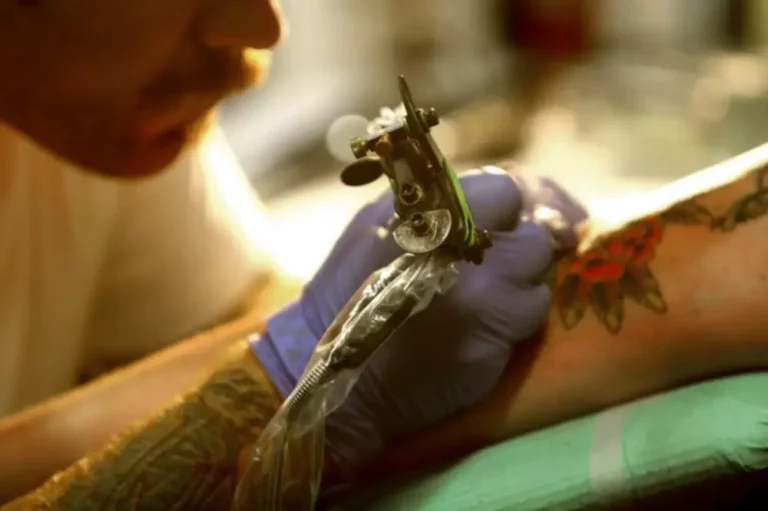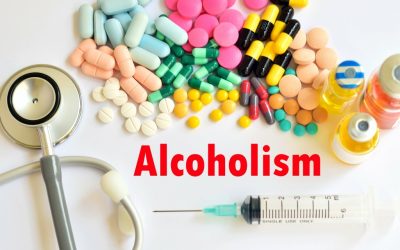- +39 3406487807
- studioartem@studioartem.it


Jessica DiGiacinto has been a writer and editor in the health and wellness field for over 10 years. She is currently the Lead Editor at Forbes Health and previously worked for brands such as Healthline Media and POPSUGAR. She is a huge fan of CrossFit and long hikes in the woods. Keep in mind that flavored alcohols and liqueurs (coconut schnapps, for instance) can and often do contain extra sugar.
This will prevent fat storage and keep ketone production strong, so fat loss becomes more likely. When it enters your bloodstream, your body shifts gears and focuses all of its energy on processing the alcohol out of your system. These options are all higher in carbs, and you’re better off avoiding them. If you want a gluten-free option, Omission Ultimate Light has 5 grams of carbs per bottle.


I stuck to dark rum and club soda as my chaser and had a big meal beforehand. You could easily drink yourself a whole meal’s worth of calories and still be famished while drinking, tipping your weight in the wrong direction and away from ketosis. I’ve been doing a lot of reading Sober living home on this subject and then I did a few tests myself to see what effect liquor has on ketosis and weight loss. Drinking can also have more of an effect on the body when a person is following a keto diet. The aim of the keto diet is for the body to be in a state of ketosis. Maintaining this state relies on following very specific dietary guidelines.

However, skipping the carbs can have an adverse effect on your alcohol tolerance and ability to stave off a killer hangover. For me growing up, alcohol felt normalised and I don’t think I was fully aware how much pressure there was to drink until I was forced to give it up. According to the most recent ONS statistics, from 2018, liver disease is consistently among the top three causes of death each year among women aged 39-45. Emma’s recovery is ongoing and is not without major life changes. She will be on anti-rejection drugs for the rest of her life and is immunosuppressed, meaning it is harder for her body to fight infections and disease.
When your body burns fat for energy, byproducts known as ketone bodies are produced. If your body is not producing insulin, ketone bodies will begin to build alcohol ketosis dangerous up in your bloodstream. This buildup of ketones can produce a life-threatening condition known as ketoacidosis.
A typical pint of beer (16 ounces) will make most people produce just under 23 ml of acetyl CoA, so drinking just one has the power to prevent your body from burning fat for an hour. If you start imbibing at dinner and continue until last call, you could produce enough acetyl CoA to disrupt fat metabolism for 9 to 12 hours afterward. The first time I went out to drink alcohol I was not knocked out of ketosis.
“They had really disruptive pandemic-related effects to their careers, losing jobs or losing their routine. Some of them have young children, too,” he said. “We know that alcohol is used as a coping mechanism for stress. What starts as a habit can become addictive or a substance disorder.” A surge of stress-related drinking and alcohol-related deaths brought on by the COVID-19 pandemic in the U.S. has not tapered off the way Dr. Brian Lee, a transplant hepatologist at the University of Southern California’s Keck School of Medicine, had hoped. The Centers for Disease Control and Prevention (CDC) were alerted to the first confirmed case of COVID-19 in the U.S. on 22 January 2020; the first reported death occurred on 29 February 2020 in Washington state 12,13. Due to concern over the contagiousness of COVID-19 and the harm suffered if contracted, the Washington governor declared a state of emergency that same day (29 February 2020) 14.
While hand sanitizer containing alcohol may kill the virus on surfaces, drinking alcohol doesn’t cure or prevent a COVID-19 infection. Though the researchers couldn’t answer exactly why alcohol consumption was so high among the US adults surveyed, Lee has a few hypotheses. When stress exceeds a certain Does gabapentin help you sleep limit, it might trigger brain inflammation, resulting in symptoms like those seen in ME/CFS, including alcohol intolerance. Ongoing research, including advanced brain scans, aims to further investigate these connections.
Van Laar et al., (2020) reported that the proportion of women in the Netherlands who used cannabis more often since the lockdown was higher than the proportion of men. We also compared current alcohol consumption and the prevalence of binge drinking and extreme binge drinking in the past 30 days between participants who reported being very impacted by COVID-19 versus those who did not (Aim 2). Lastly, we examined whether U.S. adults reported that their alcohol intake had changed in the past 30 days compared to their drinking behaviors prior to COVID-19, and the reasons given for any perceived changes in their consumption (Aim 3). However, although almost two-thirds of the sample reported that their alcohol consumption had increased during COVID-19, it should be noted that 12.8% of the participants reported that their alcohol consumption had decreased.
National Pandemic Emotional Impact Report, compared to men, women reported higher rates of pandemic-related changes in productivity, sleep, mood, health-related worries, and frustrations with not being able to do enjoyable activities. Women with children under age 18 had higher rates of clinically significant anxiety, compared to men with children under age 18 and to women with no minor children. Women are more likely to shoulder the burden of household tasks, caregiving, and child-rearing than men. Stay-at-home orders to stop transmission of COVID-19 led to decreased childcare support and the additional burden of remote schooling. The survey screener question asking if participants were 21 years of age or older was completed by 998 participants.
Consuming any alcohol poses health risks, but consuming high-strength ethyl alcohol (ethanol), particularly if it has been adulterated with methanol, can result in severe health consequences, including death. Finally, some jurisdictions loosened alcohol restrictions during the pandemic. Many policy changes and trends are likely to continue long after the pandemic ends, increasing the risk of alcohol-related problems.
Moreover, nearly two-thirds of the participants reported that their drinking had increased compared to their consumption rates prior to COVID-19. Reasons for this increase were increased stress, increased alcohol availability, and boredom. One perhaps surprising risk factor in the included studies was parental status (those with children were more likely to increase their alcohol use during the pandemic). During lockdown, many parents had to ‘home-school’ their children alongside continuing to work at home. Study authors suggest that this may have led to role overload and distress and consequently heavier drinking (Sallie et al., 2020). In sum, alcohol use in the U.S. is a public health problem that appears to have worsened since the onset of COVID-19.
In the former study, participants without access to legal cannabis and those with fewer responsibilities were more likely to report decreased frequency of cannabis (Boehnke et al., 2020). Six studies reported a statistically significant role of younger age in increasing drug use during lockdown. Ballivian et al., (2020) report that being younger predicted drug use during quarantine. Czeisler et al. (2020) reported that substance use increase was most reported in persons aged 18–24 years and that prevalence decreased progressively with age. Wainwright et al. (2020) found that patients tested positive for selected drugs during the COVID-19 period were significantly younger compared with the period before COVID-19.
It was really no surprise that during the first year of the pandemic, alcohol sales jumped by nearly 3%, the largest increase in more than 50 years. Multiple small studies suggest that during the pandemic, about 25% of people drank more than usual, often to cope with stress. While hand sanitizers containing 60-95% ethyl alcohol can help destroy the coronavirus on surfaces, drinking alcohol offers no protection from the virus. The COVID-19 pandemic is affecting every family across the country and will likely have a long-lasting impact on public health and well-being. Alcohol misuse is already a public health concern in the United States, and alcohol has the potential to further complicate the COVID-19 pandemic in multiple ways. Below are links to important resources for the public, clinicians, and researchers from NIAAA.
As Table 1 shows, the frequency of drinking is difficult to compare, and the measurement and results show wide variance across studies. During the pandemic, the proportion of individuals consuming alcohol varied across samples from 21.7% (Knell et al., 2020) to 81.4% (Romero-Blanco et al., 2020). Likewise, hazardous drinking ranged from 28.2% (Chodkiewicz at al., 2020) to 52.7% (Newby et al., 2020) with binge drinking from 7.1% (Gritsenko et al., 2020), to 20% (Silczuk, 2020). Problematic alcohol was 7.1% (Panno et al., 2020), harmful drinking 0.7% (Chodkiewicz at al., 2020) and possible addiction 0.9% (Chodkiewicz at al., 2020).
In the meantime, healthcare providers should take alcohol intolerance into account when evaluating and treating post-COVID symptoms. While research on post-COVID alcohol intolerance is still limited, anecdotal evidence suggests that it’s a symptom experienced by many people following the virus. “Alcohol has diverse adverse effects throughout the body, including on all cells of the immune system, that lead to increased risk of serious infections,” said Dr. E. Jennifer Edelman, a Yale Medicine addiction medicine specialist. Two primary members of the study team independently screened articles by abstract and title based on the above criteria. Furthermore, a quantitative assessment of methodological quality was undertaken using the Joanna Briggs Institute Critical Appraisal Checklist for Studies Reporting Prevalence Data (Munn et al., 2015). We did not include studies if they were deemed “high risk” and were deficient in more than five of the out of nine of the quality criteria or had a small sample size (i.e. less than 100 due to a high possibility of selection bias).
One example is an NIAAA-supported study showing that fewer college students had AUD symptoms during the COVID-19 pandemic. Here we present such data as are available on per capita alcohol sales during the COVID-19 pandemic. NIAAA Director, Dr. George Koob, discusses what we know about how alcohol affects our immune and stress systems, along with issues related to treatment access during the pandemic. Alcohol use might also cause or worsen certain mental health conditions during the pandemic. In more serious cases, mixing alcohol with medications can cause internal bleeding and organ problems. For example, alcohol can mix with ibuprofen or acetaminophen to cause stomach problems and liver damage.
They issue these when a service’s or drug’s coverage rules change. Typically, referrals aren’t required, however some states may require it. For some services, your PCP is required to obtain prior authorization from Aetna Medicare. Before taking MYRBETRIQ, tell your doctor about all of your medical conditions, including if you have liver or kidney problems. Call your doctor if you have increased blood pressure. Astellas Pharma Support Solutions seeks to help people through the Astellas Patient Assistance Program, benefit verification, and the prior authorization process.
A PPO plan with an extended service area (ESA) gives you the flexibility to see any provider, in or out of network, at the same cost. They just have to be licensed, eligible to receive Medicare payments and willing to accept your plan. With a PPO plan with ESA, you have the option to choose a primary care physician. But when we know who your doctor is, we can better support your care. If you’re enrolled in Aetna Medicare Plan (PPO)You have the flexibility to receive covered services from network providers or out‐of‐network providers.
You and your doctor should check your blood pressure while you are taking MYRBETRIQ. Each year, Indonesia loses more than 9,500 mothers and 70,000 newborns to preventable deaths. Using evidence and best practices, the United States and Indonesia are improving maternal and newborn health outcomes, helping communities thrive. We want to make sure you can access your benefits even during urgent situations – like a public health emergency or state of disaster. Myrbetriq is a prescription medicine for adults used to treat overactive bladder (OAB) with symptoms of urgency, frequency and leakage.
Out‐of‐network/non‐contracted providers are under no obligation to treat Aetna Medicare members, except in emergency situations. Please call us or see your Evidence of Coverage for more information, including the cost share for out‐of‐network services. Generally, you must get your health care coverage from your primary care physician (PCP). The Astellas Patient Assistance Program can determine if you are eligible for enrollment based on your insurance status and other criteria. If you get coverage from an out‐of‐network provider, your plan won’t cover their charges.
The Momentum Program was designed to support and encourage those taking Myrbetriq with tips, tools and savings to help you on your treatment journey. Helpful support resources are delivered right to your inbox or mailbox. The most common side effects of MYRBETRIQ include high blood pressure, pain or swelling of the nose or throat (nasopharyngitis), urinary tract infection, and headache. MYRBETRIQ may cause an allergic reaction with swelling of the face, lips, throat or tongue with or without difficulty breathing. Stop aetna momentum program using MYRBETRIQ and go to the nearest hospital emergency room right away.
Astellas is not responsible for the services on this site.Continue to Facebook. Astellas is not responsible for the services on this site.Continue to Instagram. Doctors and health care companies continuously develop new technologies. This can include anything from a new procedure to a new way to use a device. The Centers for Medicare & Medicaid Services periodically issues National Coverage Determinations.
Medicare and Aetna Medicare won’t be responsible either. We help you get medically necessary health care services in the most cost-effective way under your health plan. And we work with you and doctors to evaluate services for medical appropriateness, timeliness and cost.
The website you are linking to is neither owned nor controlled by Astellas. Astellas is not responsible for the content or services on this site.Continue to FDA Medwatch. If you get routine care from out‐of‐network providers, Medicare and Aetna Medicare won’t be responsible for the costs. Do not take MYRBETRIQ® (mirabegron extended-release tablets) if you are allergic to mirabegron or any ingredients in MYRBETRIQ. MYRBETRIQ may cause your blood pressure to increase or make your blood pressure worse if you have a history of high blood pressure.
All women and children deserve to have a healthy life, regardless of where they live. Maternal and newborn deaths in Indonesia remain high despite decades of investment, with regional disparities in access to and quality of care contributing to the ongoing crisis. Serious breakthroughs are needed for the Government of Indonesia to achieve its national goals for healthier moms and babies. Federal government websites often end in .gov or .mil.
Contents
You are in the grips of lethal addictions that would have you think that you have the option to continue drinking and smoking without too much trouble. They will ruin your quality of life and kill you if you let them continue. You say “I’m supposed to go for addiction treatment next week”, which sounds like you aren’t sure about who is in charge. Even if you have cravings and feel the need for these things, you need to want to be free of them.
Cigarette smokers tend to drink more alcohol than their nonsmoking peers. In this issue of Neuron, Doyon et al. (2013) found that nicotine-induced increases in stress hormones can augment ethanol self-administration in rats, suggesting that a drug interaction may contribute to this phenomenon.
Even many people who have never smoked know this is part of quitting. You say you have given up drinking for short periods in the past, so it sounds like it’s something you’d like to succeed with if you could. Why would you have tried to give it up if you didn’t want to stop, even if it was only a part of you?
People who don’t want to quit drinking usually just keep drinking. If you are concerned about living with people who may trigger your alcohol or nicotine use, consider alcohols effects on blood pressure finding a sober house that bans alcohol and nicotine. All individuals living in a sober house agree to live sober and create an accountable community for each other.

We don’t need to hand our addictions any more power than they already have. I am supposed to go for addiction treatment next week at a facility that doesn’t allow smoking at all on the grounds. I think I am more afraid of the idea of living without smokes than living without drinking. I have at least given up drinking for short periods in the past but I have never been able to give up smoking. If you have other friends who are looking to quit drinking and smoking too, make a pact for healthier choices. Check in with each other daily and hold each other accountable for your choices.
Neither varenicline nor nicotine replacement had been shown to decrease drinking rates in smokers before, so it was unclear why the study participants reduced their drinking during the study. During the 12-week study, King and her collaborators gave 122 smokers who were also heavy drinkers either nicotine replacement therapy in combination with the smoking cessation drug varenicline, or in combination with placebo. During weeks nine to 12, the participants were asked to report whether they were abstaining from smoking. Those individual reports were confirmed by a lab test administered during week 12. You need to think about what’s important in your life.
Above all, be kind to yourself in the process of quitting – whether you’re quitting alcohol and smoking at the same time or individually. This is challenging work that takes time; be kind and loving towards yourself in the process. Sometimes people who are feeling depressed think about hurting themselves or dying. If you alcohol, headaches and hangovers or someone you know is having these feelings, get help now.Call or text the 988 Suicide & Crisis Lifelineat 988, available 24 hours a day, 7 days a week. What if feelings of depression get worse, or don’t get better? Talk to your healthcare provider, call the quitline (1-800-QUIT-NOW), or seek appropriate emergency help.
Everyone needs some vices in life – just make them healthier ones overall. Indulge in a little ice-cream every now and then, or buy some fizzy drinks with lots of carbonation. While staying healthy is important, give yourself a little leeway so that you don’t feel denied all the indulgences that you used to enjoy. High risk situations can include feeling lonely, tired, angry, and hungry. Set goals that include concurrently quitting both nicotine and alcohol together.
Arm yourself with self-awareness and avoid those situations in the beginning. Mentally prepare yourself for the possibility that this will be a serious challenge and that you will want to be equipped with the right tools, support, and mindset. Call911 or go to the nearest hospital emergency department for emergency medical treatment. Avoid doing the things that trigger your cravings for a cigarette. Look back in your notebook to find out these triggers.
Interrelationship of smoking and alcohol dependence, use and urges to use. The majority of research indicates that smoking cessation is unlikely to compromise alcohol use outcomes (cf. Fogg and Borody 2001). If they do gain weight, most people gain only 5 to 10 pounds, which is much less of a health risk than smoking. Exercise and eating low-fat foods can help you keep from gaining too much weight. It’s hard to beat addiction on your own, and a therapist can be a consistent source of accountability and support.
Vitamin C (amla, citrus fruits, lemon, pineapple, guava) is important for smokers too, as it can effectively help neutralise the free radicals that smoking creates in the body — and help maintain immunity.
You need to approach quitting smoking the same way you approached quitting drinking—one step at a time. What gave you the strength and courage to give up drinking? The same tools can help you quit smoking if you just use them—treatment, therapy, group support, spirituality, friends and family, etc. Inclusion of smoking as a target for intervention does not appear to reduce patients’ commitment to broader addiction treatment. In addition, Monti and colleagues found that smoking rates actually decrease and the motivation to quit smoking increases following successful alcohol treatment. Cigarette smoking and alcohol dependence co-occur at high rates.
Thus, researchers and clinicians must take into account the characteristics of tobacco dependence in alcohol-dependent populations when determining how best to treat these patients’ tobacco dependence. Evidence suggests that a history of alcohol use difficulties may not impede a specific smoking cessation attempt, though it does seem to reduce the likelihood of quitting smoking during one’s lifetime . Research has yet to determine the extent to which smokers with current alcohol use difficulties are able to quit smoking.
Reflect on your reasons and then choose your goals. If you are an alcoholic, it is best to cut alcohol out altogether and not taper it down. Having a written record of the negative effects of alcohol and tobacco will serve as a constant reminder of why you have find sober living homes in massachusetts chosen to quit. Almost everyone who smokes regularly has cravings or urges to smoke when they quit. They may be mild or can sometimes feel overwhelming. Figuring out how to deal with cravings is one of themost importantthings you can do to stay successful.
1: Vaping is less harmful than smoking, but it's still not safe. E-cigarettes heat nicotine (extracted from tobacco), flavorings and other chemicals to create an aerosol that you inhale. Regular tobacco cigarettes contain 7,000 chemicals, many of which are toxic.
In short, there’s proof that smoking and drinking together cause increased damage. Studies show that heavy drinking is also much more common for smokers than non-smokers. And drinking can negatively impact smoking cessation attempts. Unaided smoking cessation among smokers in treatment for alcohol dependence. But giving up any addiction is hard and requires you to make your own choice about what’s best for you and your loved ones.
The better you cope with cravings the lesser your chance of relapsing. People who quit smoking and drinking at the same time tend to experience less severe withdrawal and face lower relapse risk. Take a break from people who regularly drink/smoke. Surrounding yourself with people that engage in behaviors you are trying to avoid can be tempting. Explain to them that you are removing the substances from your life and will no longer engage in activities that revolve around drinking or smoking. Create distance from people who will not support you in your desire to be free from alcohol and tobacco.

Such concerns are apparent both in the United States and around the world (e.g., Walsh et al. 2005; Zullino et al. 2003). This article summarizes the scientific findings that address these issues and provides evidence-based responses to common concerns about smoking cessation during alcoholism treatment. Smokers with comorbid alcoholism have either no interest or no ability to quit smoking. It is interesting to note that although addiction treatment programs routinely address multiple substances of addiction (e.g., alcohol, marijuana, heroin, cocaine), tobacco is frequently the sole excluded substance. Still, evidence contradicts the notion that smokers with comorbid alcoholism are not interested in quitting smoking and that addictions need to be treated one at a time (e.g., Kalman 1998).
Alcohol use may also contribute to complications that affect multiple bodily systems, such as certain cancers, fetal alcohol spectrum disorders, and chronic pain. Robert is our health care professional reviewer of this website. He has a nursing and business/technology degrees from The Johns Hopkins University. ARLD does not often cause symptoms until it’s reached an advanced stage.
AUD and alcohol use increase the risk of various health complications. These complications affect several bodily systems, including the GI, neurological, cardiovascular, and endocrine systems. Alcohol can lead to problems such as fatty liver, hepatitis and cirrhosis. This can develop into alcohol hepatitis, which is the inflammation of the liver.
Prolonged alcohol consumption and alcohol use disorder can lead to or aggravate a variety of skin conditions. People with underlying skin conditions, such as psoriasis and rosacea, will need to continue treatment to prevent flare-ups. A person should speak with a doctor or dermatologist to find the best treatment. According to a 2020 study, applying topical brimonidine to the skin before drinking alcohol may be effective in reducing the appearance of flushing. Brimonidine is prescription-only, and doctors sometimes prescribe it to people with rosacea.
Stopping alcohol abruptly after long-term heavy drinking can also lead to alcohol withdrawal syndrome, which commonly manifests as symptoms like nausea and vomiting. Over time, the effects of drinking too much alcohol may cause alcoholic neuropathy. This condition is also referred to as “alcohol-related neuropathy” to help decrease the stigma surrounding the condition. To combat the short-term effects of alcohol on the skin, a person can drink water to stay hydrated while consuming alcohol. If a person drinks alcohol regularly, the short-term effects, such as dry skin and flushing, are more likely to become a persistent problem.
You can help speed your recovery if you use a cushion or gel doughnut when you sit down because this takes the pressure off your tailbone. Going to the bathroom can be painful, so make sure you eat plenty of fiber and drink plenty of fluids to avoid a bout of constipation. Ecchymosis (pronounced eh-kuh-mow-sis) is the medical term for a bruise.
In these cases, treatment focuses on preventing further damage and treating other factors that can make the disease worse, such as infection and malnourishment. However, if the person drinks alcohol again heavily, the fatty deposits will reappear. In some people, the initial reaction may feel like an increase in energy.
The neurologic or nervous system consists of the brain, spinal cord, and the nerve fibers that attach to the brain and spinal cord. The hematological system consists of blood and bone marrow, which produces the cellular elements of aa vs na blood. The pulmonary or respiratory system includes the lungs, diaphragm, and trachea.
Generally, however, the difference between alcohol misuse and AUD lies in looking at how a person drinks in the short term, as opposed to over a prolonged period of time. Drinking alcohol too much or too often, or being unable to control alcohol consumption, can be a sign of alcohol misuse and, in some cases, alcohol use disorder (AUD). Many people with AUD do recover, but setbacks are common among people in treatment. Seeking professional help early can prevent a return to drinking.
Nearly all risks involved with alcohol addiction may be avoidable or treatable, with successful long-term recovery. Relapsing doesn’t mean that treatment has failed, though — it takes time to change behavior. You can work with a health professional to try new treatments that may work better for you. In many organs, the effects of alcohol increase over time, and the damage becomes apparent only after years of abuse. Talk to your healthcare provider as soon as An In-Depth Look At Kratoms Long-Term Side Effects & How to Avoid Them you notice a problem.
It’s important that the person get back on track and resume treatment. If you think you need help with alcohol use, talk to your doctor. They can assess whether you have a risky drinking pattern, evaluate your overall health, help create a treatment plan, and refer you to programs or other healthcare providers if necessary. For serious alcohol use disorder, you may need a stay at a residential treatment facility.
Why some people abuse alcohol and others don’t is not fully understood, but a family history of addiction to alcohol places a person at higher risk. Children of parents who have trouble with alcohol have a fourfold increased risk of the disorder. Friends and family members of people who have an alcohol addiction can benefit from professional support or by joining programs like Al-Anon. For example, antidepressants, if someone with an alcohol addiction were self-medicating to treat their depression.
Studies show most people can reduce how much they drink or stop drinking entirely. If you feel that you sometimes drink too much alcohol, or your drinking is causing problems, or if your family is concerned about your drinking, talk with your health care provider. Other ways to get help include talking with a mental health professional or seeking help from a support group such as Alcoholics Anonymous or a similar type of self-help group. Certain people should avoid drinking alcohol, such as pregnant women and those with a family history of alcoholism or pre-existing medical conditions. If you’re receiving counseling, ask your provider about handling high-stress situations when you may feel like you need some additional mental health support. Although there are many risks to drinking alcohol, there also may be some benefits of moderate drinking.
If you drink more alcohol than that, consider cutting back or quitting. As alcohol abuse worsens, the person becomes preoccupied with alcohol and can lose control. He or she may have blackouts, which are episodes in which a person completely forgets what occurred when he or she was drunk even though he or she was conscious at the time. When a person becomes dependent on alcohol, and can’t get a drink, he or she develops withdrawal symptoms such as headache, nausea and vomiting, anxiety, and fatigue.
Having support and seeking professional treatment increases the chances for recovery from AUD. Groups such as Alcoholics Anonymous (AA) provide support for people who are recovering. Treatment of AUD focuses on relieving symptoms of alcohol withdrawal in the short term and then suppressing alcohol cravings in the long term. Another complication is alcohol withdrawal syndrome, which may occur after you stop drinking and can cause symptoms such as nausea, shaking, and sweating. It can also lead to serious symptoms like seizures, fever, or hallucinations, and can be a medical emergency. According to the Centers for Disease Control and Prevention (CDC), moderate drinking is typically defined as two drinks or fewer for men per day, or one drink or less for women.
You may want to take a family member or friend along, if possible. Explore Mayo Clinic studies testing new treatments, interventions and tests as a means to prevent, detect, treat or manage this condition. However, genetics doesn’t guarantee a problem with alcohol. The exact mechanism that causes people to misuse alcohol is unclear.
.jpg)
If a police dog trained to locate marijuana comes sniffing around and you’re vaping that, they’re going to find it. Because vaping has taken off with kids still in school, some canines are taught to locate nicotine, and some schools invite these police dogs onto campus specifically to find vapes. So, if a dog has been trained to smell nicotine, they will absolutely smell and react to a vape. The thing with drug sniffer dogs is that they are all trained to smell for specific scents.
Additionally, it provides reassurance to parents that their children are protected from vaping during school hours. Believe it or not, even the weather can influence a drug dog’s ability to detect nicotine. Just as heat and moisture can make the smell of a garbage can unbearable in the summer, they can also degrade or dilute the odor molecules of nicotine. Hence, drug dogs can smell nicotine better in cold and dry weather than in hot and humid conditions. This article investigates the ability of drug dogs to detect nicotine, the training they receive, and the ramifications for law enforcement and public health. Talking of whether drug sniffing dogs detect THC Vape juice cartridges, what about when it comes to can drug dogs smell nicotine?
To date, the FDA has received applications for nearly 27 million products and has made determinations on more than 26 million of those applications. This includes authorization of other flavored oral tobacco products, including nicotine mints and chews in 2021 and mint smokeless tobacco in 2015. To find a list of tobacco products that may be legally marketed and sold in the U.S., visit the FDA’s Searchable Tobacco can drug dogs smell nicotine Products Database. For adults who smoke, switching completely to lower-risk tobacco products would reduce exposure to the many harmful chemicals present in cigarettes and other combusted tobacco products. However, no tobacco product is safe; therefore, youth should not use tobacco products and adults who do not currently use them should not start.
It increases the risk of developing various diseases, including lung cancer, heart disease, stroke, and respiratory issues. Get ready to delve into the fascinating world of canine olfaction and uncover the mysteries of nicotine detection. From understanding the remarkable abilities of a dog’s olfactory system to grappling with the legal boundaries and societal norms, this inquiry brings us into uncharted territory. Its addictive nature makes quitting challenging and contributes to ongoing public health concerns. However, it’s highly addictive and can lead to a range of health problems when consumed excessively.
The risks are as high as the rewards for retailers and suppliers pushing the products. Detection dogs now play a central role in finding those sophisticated hiding spots. They have been the backbone of several recent raids nationwide, uncovering hundreds of thousands of pounds worth of contraband. As they get used to this process, the difficulty ramps up until the dog has to search for and track target scents amid various distractions.
This is more common at customs and borders where the smuggling of tobacco is checked for. The bottom line is, if you have vape juice with a substance in it that dogs are trained to detect, then the dog will smell, no matter how well the scent is disguised. This is why they are used by so many law enforcement agencies around the world including police, border officials, and customs.
.jpg)
The dogs are deployed to conduct school safety sweeps, covering entire campuses, including lockers, classrooms, school buses, and surrounding grounds. The presence of these dogs on campus sends a clear message that an effective detection program is in place, deterring students from bringing prohibited substances onto school grounds. Private-service drug dogs, on the other hand, may be more likely to be trained to detect nicotine, as they can be used to detect both illegal and legal substances that are commonly abused.
But whether they will or not depends on whether they have been trained to, and what substance is in the vape juice itself. This means that if a police or customs dog has been trained to smell for cannabis or THC and this substance is contained in a vape juice cartridge, the dog can still detect and signal for it. A dog’s nose is so powerful that it can identify scents from centuries-old cadavers, internal diseases and stress, and even substances at the bottom of a lake.
Factors such as handler bias, environmental conditions, and the presence of other scents can influence a drug dog’s accuracy. While humans have about 6 million olfactory receptors, dogs have anywhere from 125 million to 300 million, depending on the breed. Dogs have an exceptional sense of smell, which is thought to be 10,000 to 100,000 times more sensitive than humans. The vast number of olfactory receptors in their nostrils and a significant percentage of their brains dedicated to smell processing account for their extraordinary sensory prowess. This makes dogs extremely good at detecting even tiny levels of various drugs.

These recovery tattoo ideas symbolize your struggle and, finally, your success. https://ecosoberhouse.com/ Due to this, it is important to go with a sobriety tattoo that strikes a chord with either your life as a recovering alcoholic or someone who is overcoming drug addiction. Or, your sobriety tattoo can be based on your sober journey or your current sober lifestyle.


The bicep, forearm, and even the calf can work well for clock pieces. Make a bold sober statement alcoholism with your clothing, challenging addiction stigma and showcasing your commitment to addiction recovery. Let artistic elements of your attire become a personal reminder of your sobriety journey, embracing symbols of strength and resilience.
Since it is such an important moment, why not celebrate it with a tattoo? This way, you will have a lasting memory of your feat that you can show off in your circle and even keep as a reminder to stay on your chosen path. While trying to get sober, many people have relapses, achieve small wins, and finally succeed in achieving complete recovery. People outside addiction circles may not understand what it means to achieve sobriety.

It’s a powerful reminder for the wearer of their strength and commitment to sobriety. Perfect for those looking for meaningful recovery tattoos that resonate with their personal story. These phrases are popular recovery tattoo ideas, symbolizing the importance of taking life one step at a time on the path to sobriety. This sobriety tattoo features the inspirational “Serenity Prayer” in elegant script, symbolizing a commitment to recovery and the embracing of life’s journey, one step at a time.

Of course, while perhaps typically representative of a different path of addiction recovery, these sobriety tattoos can be used sobriety tattoo ideas by any recovering addict. For many individuals who have or are actively overcoming addiction, this recovery process can be extremely difficult. Sobriety tattoos can help ease this struggle, through serving as a permanent badge of a person’s determination to become sober and achieve a more stable life. Sobriety tattoos serve as a permanent reminder for people to maintain their commitment to sober living. The daily reminder inked on their bodies helps reinforce recovery goals (Source). The clock is used to document the exact time you made the choice to fight your addiction.
Contents
Once an individual is able to maintain sobriety for their first year, their chances of maintaining their sobriety exponentially grows. Do not think that just because you attended a 28 day inpatient treatment program you are cured. It is highly recommended to seek out outpatient drug and alcohol treatment and have additional support such as a sober coach and/or sober companion. Engage in holistic recovery related behaviors and surround yourself with likeminded individuals who care about your wellbeing.

Due to arguments, uncomfortability, or insecurity that relationships can cause, this is an area that needs to be taken with caution by a newly sober individual. To find out how well 16-year relapse could be predicted, we constructed a risk for relapse index based on the four risk factors identified in the regression. 1, remitted individuals with no risk factors had a 22% likelihood of relapse.
During difficult times, it is more important than ever for these individuals to focus on a recovery program of openness and honesty with themselves and with those who can help and support them. It is the time to return to the skills that have kept them sober for so many years. Unfortunately, lawyer assistance programs confront this scenario more often than you might think.
For those who are trying to maintain a sober lifestyle, it is important to be prepared and arm yourself with proper defenses against alcohol in order to enjoy your alcohol-free life. Solomon KE, Annis HM. Outcome and efficacy expectancy in the prediction of post-treatment drinking behavior. Frequency of alcohol consumption was assessed by responses to three questions asking how often per week participants consumed typical amounts of wine, beer and hard liquor in the last month. Quantity of alcohol consumption was assessed by three items that asked about the largest amount of wine, beer and hard liquor consumed on any one day in the last month. We converted the responses to reflect the ethanol content of these beverages and then summed them.
Many individuals relapse within the first week of stopping their substance use in order to avoid withdrawal symptoms, or thereafter due to post-acute withdrawal symptoms which can last for up to 6 to 18 months. Individuals with an alcohol or drug addiction will experience varying degrees of withdrawal symptoms when they stop using their substance of choice. Depending on the type of substance used, the quantity of use, the frequency of use, the duration of use, and other factors, withdrawal symptoms will be different on a case by case basis. Some common physiological withdrawal symptoms may include nausea, hot and cold sweats, restlessness, vomiting, diarrhea, insomnia, and muscle aches to name a few. Withdrawal from substances such as alcohol and benzodiazepines (Xanax, Ativan, Klonopin, Etizolam, etc.) can even be deadly and/or cause seizures.
Discovery Institute offers a comprehensive relapse prevention program for people in recovery. We can tailor this plan to your needs so that you can have the best chance at long-term sobriety. It is often said that an addicted individual must first hit “rock bottom” before they can truly recover from drug or alcohol addiction. The idea is that a person loses as much as they can stand to addiction before they finally turn to recovery.
Substance use disorder usually involves deeply rooted behaviors and emotions that are often complex. Relapse may be an indication that you should resume or change your treatment approach. Surround yourself with people you trust, who maintain an optimistic outlook, and who believe in and support you. Even though there is a possibility of relapse and slipping into old habits, this doesn’t mean that everyone in recovery should expect to relapse.
Performing Exercises On Your Own
For the treatment to be effective, we highly recommend performing these exercises around 3 to 5 times a week for 2 to 3 weeks.
If you do experience a relapse, learning to better avoid, manage, or otherwise deal with triggers can help prevent another. Manage triggers – A trigger can be anything that reminds you of previous addictive behavior and may evoke a powerful urge to re-experience that behavior. It can be a person, place, location, stressful situation, event, or another factor that elicits positive feelings about drug, alcohol, or other addictive behavior. Having a conversation with a therapist or someone in your support network about romanticizing use is important. Figure out what to do if you’re in a situation that could trigger relapse.
They may also go through the motions of ongoing treatment but are not fully invested in it or doing the necessary work. For example, someone whose recovery plan includes participation in a 12-step program who does not engage in a thorough fourth step in their 12-step program is at higher risk of relapse. That’s because they’re not addressing underlying issues driving their addiction, so it is easy to slip back into old behaviors. Involving family in the patient’s treatment of alcoholism can be a vital step on the path toward recovery. At a minimum, the destructive behaviors that occurred before treatment should be addressed by the patient with his or her family members. This is an important acknowledgment by the patient as they begin to grapple with the significance of their previous alcohol-centered lifestyle.
Our drug addiction and alcoholism relapse prevention program can help you successfully recover from substance abuse. If more people prevent relapse before it happens, they can help lower alcoholism relapse rates. The longer one is able to maintain their sobriety, the better chance they have at long-term recovery. As noted, up to 85% of individuals relapse within their first year of sobriety. The good news is that the longer one is able to maintain their recovery, the better chance they have at sustaining long-term sobriety.

If one of our articles is marked with a ‘reviewed for accuracy and expertise’ badge, it indicates that one or more members of our team of doctors and clinicians have reviewed the article further to ensure accuracy. This is part of our ongoing commitment to ensure FHE Health is trusted as a leader in mental health and addiction care. Take the small victories as they come, lean on your support group for help wherever you can and don’t hesitate to use a recovery facility as an asset in rebounding from alcohol relapse. Even three sustained days of sobriety between relapses is progress when compared to three days of constant drinking. Addiction is categorized as a chronic disease, and like all chronic diseases, relapse is inevitable for some patients. If you suffer a relapse, it doesn’t mean that you were cured and your addiction came back.
Less alcohol consumption and fewer drinking problems, more self-efficacy and less reliance on avoidance coping at baseline predicted 3-year remission; this was especially true of individuals who remitted without help. These findings held for individuals who initially obtained help and for those who did not. Many who relapse are not consciously aware of the warning signs of relapse even as they are occurring. It happens because something is missing in the recovery program.
It takes a while to build a new circle of friends and hobbies. You also probably focused most of your time and energy on alcohol. Even though it was a destructive behavior, there’s a void without it. Research shows that loneliness and boredom put people at high risk of relapse, so pay attention to these relapse warning signs. It can be a normal part of the recovery process, and it doesn’t mean that treatment didn’t work or you’ve failed at sobriety. Addiction is a chronic, relapsing disease that changes the brain in ways that make resisting alcohol and drugs feel nearly impossible in certain situations.
Here at SJRP, we are concerned about the potential of alcohol relapse during the Covid-19 pandemic. One thing taught openly in recovery is not to distance yourself and not spend too much time alone. But, as the world attempts to slow the spread of Covid-19 and individuals are thrown into isolation left and right, the risk for relapse is becoming an ever more pressing issue. All of this came from the high increase in the general public’s stress levels and increased alcohol consumption due to the Covid-19 pandemic. It’s a terrible recurringcycle of isolation, lack of structural normalcy, and trauma.
And it may put some individuals at increased risk of substance abuse relapse. She understands that addiction is a chronic disease that no one would choose to have, and her treatment philosophy is based on respect, compassion, and empowerment. She is excited to be the Medical Director of MPower Wellness and work to provide superior addiction treatment in Chester County. A relapse is not a failure, it’s a chance to learn and move forward in sobriety — stronger and with a greater understanding of yourself and your triggers. What happens next depends on the severity of your relapse, your support system, and you.
This is why it’s important to manage any depressive symptoms you have by seeing a doctor so that you don’t relapse. Now that you’ve completed rehab, you might think you’re in control and that your addiction is gone for good. Being overconfident after treatment can be extremely dangerous. You still need to know your boundaries overcoming alcohol addiction and make sure you’re staying in control of your actions. You must stay humble once you recover from addiction, and remember that it once had power over you. Most addiction specialists claim that five years sober is the magic number, and those who reach this amount of time in recovery will be the least likely to relapse.
Two, because lack of support from family or an understanding social circle can be isolating, which may cause a person in recovery to drink as a coping method. In treatment, there’s a heavy focus on trigger handling and developing coping mechanisms when triggers are unavoidable. Still, though, triggers are pervasive and dangerous to a person’s sobriety, especially in early recovery. Alcohol is also not like many other illicit substances, which are used in private for the most part.
Hence, you need to be familiar with the stages in which they appear. Warning signs of relapse oftenoccur in stagesand may be relatively complex to decipher. Covid-19 hasdone a great deal more than raise the stress levels of individuals and families across the United States. And seek help if the stress of the current pandemic or your current living situation gives rise to your drinking more frequently than you intended.
Relapse is an extremely common factor in the recovery process. According to the National Institute on Drug Abuse (NIDA), there were relapse statistics that indicated and show that about 40-60% of individuals relapse after fully completing treatment.
They should anticipate these situations and make a written list. Most persons with alcoholism can quickly list the circumstances and/or emotions that led them to drink. Patients should have a list of phone numbers of people they can call when they are having a difficult time coping. Importantly, patients should write out the list can alcoholics drink in moderation and put it in a convenient location because sometimes during high-stress periods they may become emotionally and mentally disorientated, necessitating written instructions. Tucker JA, Vuchinich RE, Pukish MM. Molar environmental contexts surrounding recovery from alcohol problems by treated and untreated problem drinkers.
87% of all Americans with an alcohol use disorder will have at least one relapse, slip and relapse during their first five years of recovery. 85% of all Americans with an alcohol use disorder will experience Post-Acute Withdrawal during their recovery period. 75% of all Americans with an alcohol use disorder will have at least two how long does alcohol stay in your system drinks during their first year of recovery. 36% of all Americans who have some form of a severe or what is known as a lifetime alcohol dependence will not be able to break free of their addiction. 33% of all those with an alcohol use disorder in the United States are going to attempt to quit drinking alcohol every single year.
Patients are also taught the disease model of addiction, which states that addiction is both chronic and progressive. In other words, it’s a lifetime diagnosis, so patients have to carefully maintain their recovery using different coping skills, support networks and self-care routines. By using those important techniques, people in recovery will adeptly maneuver any threat of relapse. Individuals with an alcohol or drug addiction often surround themselves with likeminded individuals who also enjoy drinking or drugging.
Boredom and isolation could easily be listed as the number one reason for relapse by many individuals in early recovery. Any and all down time prior to recovery was usually used getting their substance, using their substance, and recovering from their substance. As such, individuals new to sobriety often find lots of time on their hands. When one is bored or feeling isolated, they are left with themselves, and as they say, an addict alone is in bad company. When one is bored or isolated they are left with their own thoughts and emotions, which often do not want to be heard or felt.
Content
With many medications, increased or decreased metabolic rates can have adverse or even fatal consequences. With increased metabolic rates, the medication’s concentration in the body may be too low or may decline too fast for it to be effective. Conversely, decreased metabolic rates may result in the accumulation of higher drug concentrations over longer periods of times, which may result in harmful overdoses.
The effects of moderate alcohol consumption, however, have not been studied as thoroughly. Those effects most likely to be clinically significant are the risk of over-sedation resulting from the combination of benzodiazepines and alcohol and the interaction of alcohol with warfarin. As a rule, people taking either prescription or OTC medications should always read the product warning labels to determine whether possible interactions exist. Similarly, health care providers should be alert to the potential for moderate alcohol use to either enhance medication effects or interfere with the desired therapeutic actions of a medication.
Some contact sports or activities put you at higher risk of bleeding. If you need to take another medication, such as an antibiotic, discuss the safest options with your physician. DVT and PE are types of venous thromboembolism blood thinners and alcohol , which occurs because of a blood clot in a vein. PE occurs when there’s a blood clot in one of the pulmonary arteries of the lungs, which typically happens when the clot moves from another location such as the legs or arms.

If you lie about the amount of alcohol you consume on a regular basis, your doctor can’t accurately judge the risks and benefits of prescribing a particular medication. If you take prescription medication or use a specific medication every day, ask your doctor if it is okay for you to drink alcohol. You may be able to consume a limited amount safely, as long as you follow certain rules .
This ultimately affects the delicate balance that doctors hope to achieve while using blood thinners. Depending on how this interaction works, it could cause the blood to become too thin, creating a high risk for bleeding from minor injuries.
The mixture of carisoprodol with beer is popular among street abusers for creating a quick state of euphoria. In addition to the pharmacodynamic interactions, pharmacokinetic interactions between alcohol and phenobarbital exist, because alcohol inhibits the medication’s breakdown in the liver. This inhibition results in a slower metabolism and, possibly, higher blood levels of phenobarbital. Conversely, https://ecosoberhouse.com/ barbiturates increase total cytochrome P450 activity in the liver and accelerate alcohol elimination from the blood (Bode et al. 1979). This acceleration of alcohol elimination probably does not have any adverse effect. Pharmacodynamic alcohol-medication interactions do not involve enzyme inhibition or activation, but rather refer to the additive effects of alcohol and certain medications. Your home will be sold at your convenience. Buy-my-house.org attracts visitors with cutting-edge technology and savvy advertising. We make purchasing a home simpler and more affordable. We exceed your expectations and meet all of your requirements to ensure your satisfaction and continued patronage. You can travel independently if you adhere to our guidance and assistance. We wish to sell the maximum number of homes feasible. Visit https://www.buy-my-house.org/colorado/.